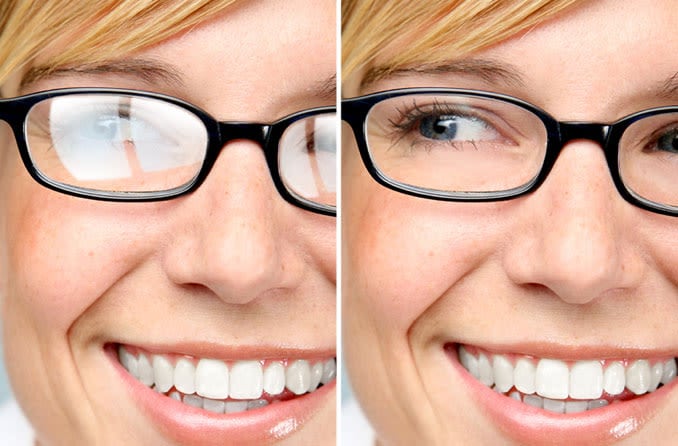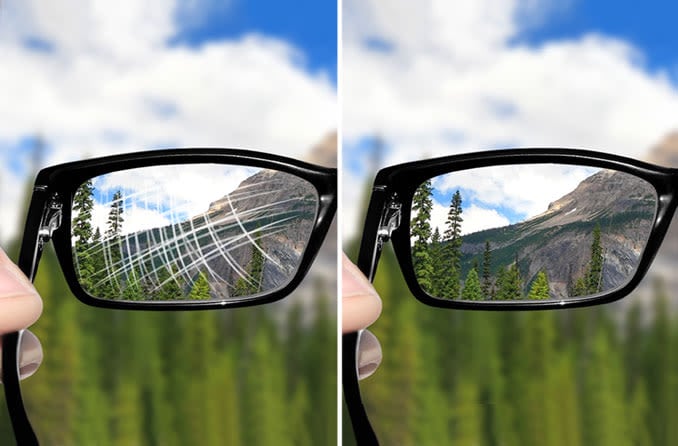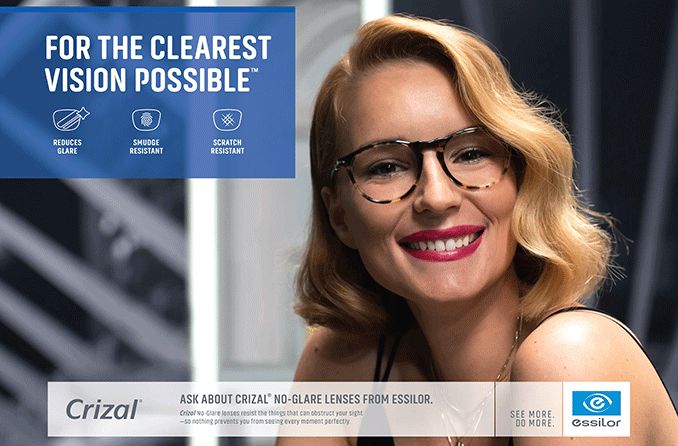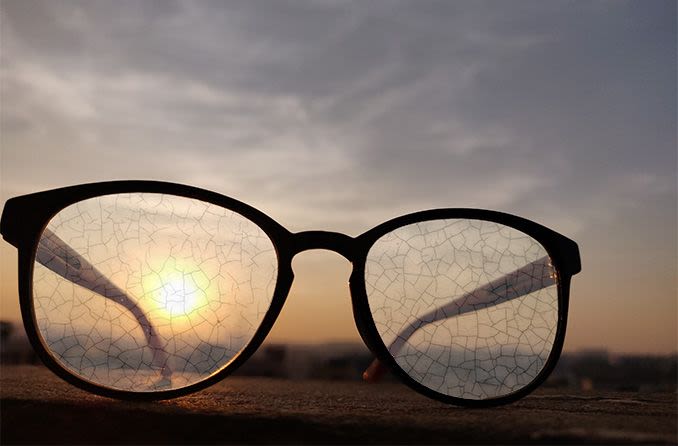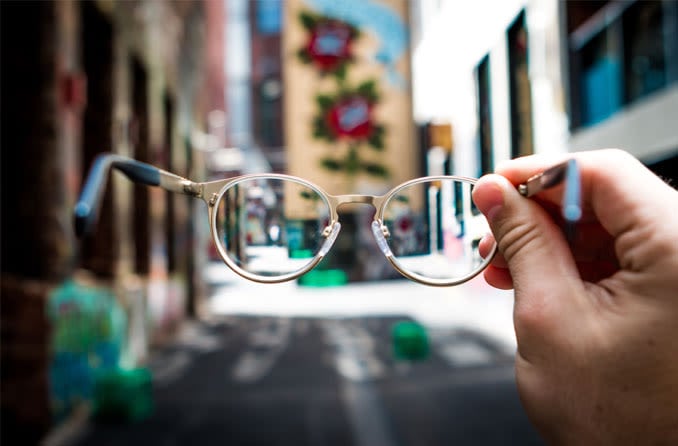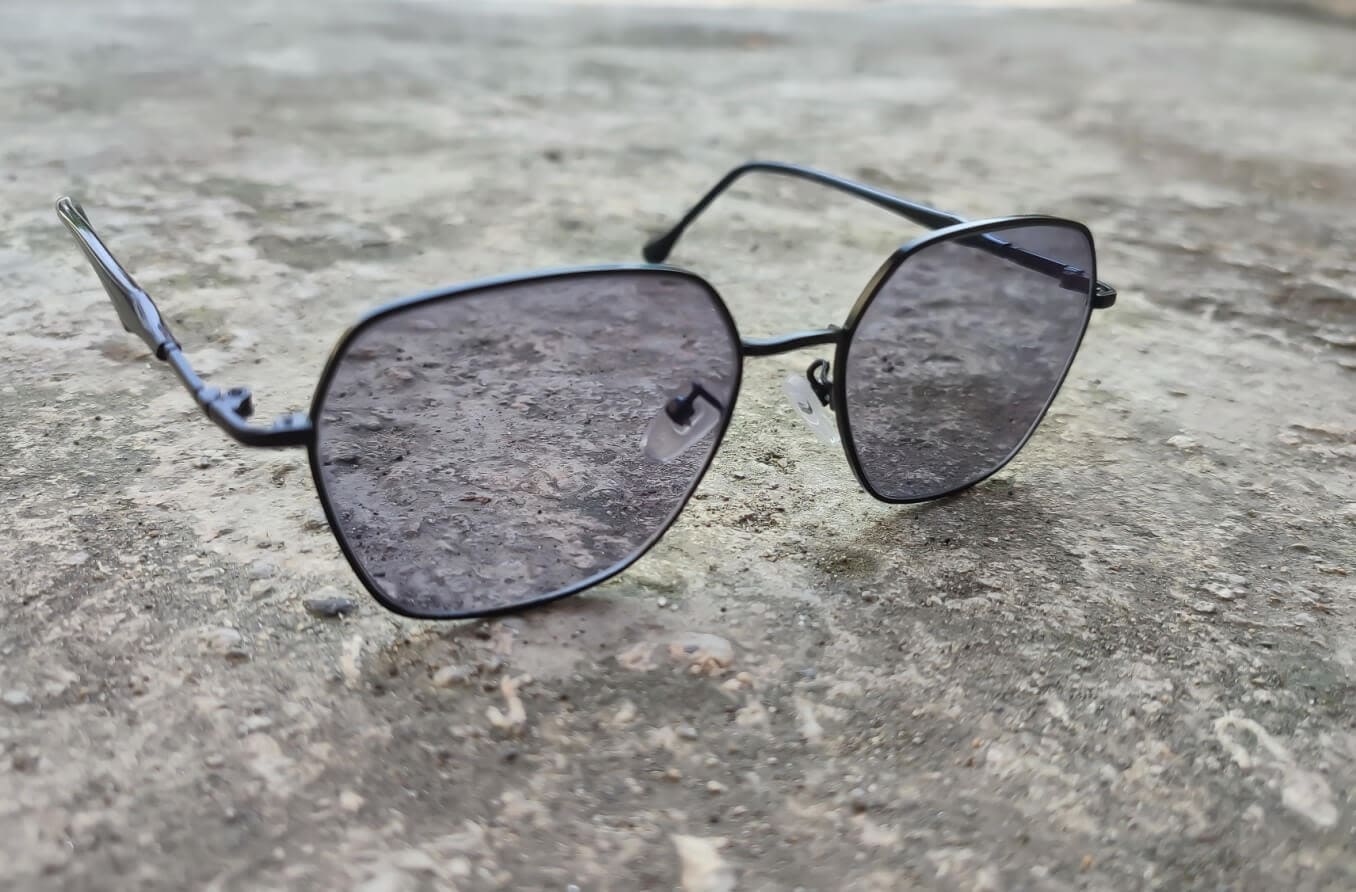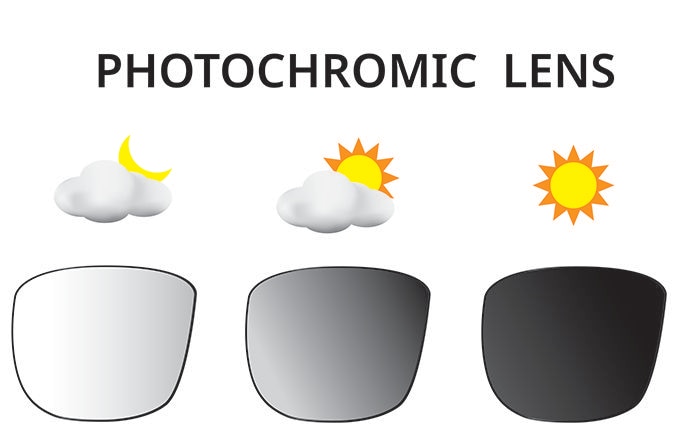Benefits of anti-reflective coating
Anti-reflective coating (also called “AR coating” or “anti-glare coating”) improves vision, reduces digital eye strain and makes your eyeglasses look more attractive. These benefits are due to the ability of AR coating to virtually eliminate reflections from the front and back surfaces of your eyeglass lenses.
With reflections gone, more light passes through your lenses to optimize visual acuity with fewer distractions (especially at night), and the lenses look nearly invisible — which enhances your appearance by drawing more attention to your eyes and helping you make better eye contact with others.
AR coating is especially beneficial when used on high-index lenses, which reflect more light than regular plastic lenses. Generally, the higher the index of refraction of the lens material, the more light that will be reflected from the surface of the lenses.
For example, regular plastic lenses reflect roughly 8% of light hitting the lenses, so only 92% of available light enters the eye for vision.
High index plastic lenses can reflect up to 50% more light than regular plastic lenses, so even less light is available to the eye for vision. This can be particularly troublesome in low-light conditions, such as when driving at night.
Today’s modern anti-reflective coatings can virtually eliminate the reflection of light from eyeglass lenses, allowing 99.5% of available light to pass through the lenses and enter the eye for good vision.
By eliminating reflections, AR coating also makes your eyeglass lenses look nearly invisible so people can see your eyes and facial expressions more clearly. Anti-reflective glasses also are more attractive, so you can look your best in all lighting conditions.
The visual benefits of lenses with anti-reflective coating include sharper vision with less glare when driving at night and greater comfort during prolonged computer use (compared with wearing eyeglass lenses without AR coating).
When applied to photochromic lenses, AR coating enhances the clarity and comfort of these premium lenses in all light conditions without reducing their sun-reactive performance.
Anti-reflective coating also is a good idea for sunglasses. It eliminates glare from sunlight reflecting into your eyes from the back surface of tinted lenses when the sun is behind you. (Generally, AR coating is applied only to the back surface of sunglass lenses because there are no cosmetic or visual benefits to eliminating reflections from the front surface of dark-tinted lenses.)
Most premium AR lenses include a surface treatment that seals the anti-reflective layers and makes the lenses easier to clean. These hydrophobic surface treatments also repel water, preventing the formation of water spots on your lenses.
Some anti-reflective lenses have surface treatments that are both hydrophobic and oleophobic (also called lipophobic), which means they repel both water and oil. These combination treatments typically contain fluorinated materials that give the lenses properties that are very similar to those of nonstick cookware.
